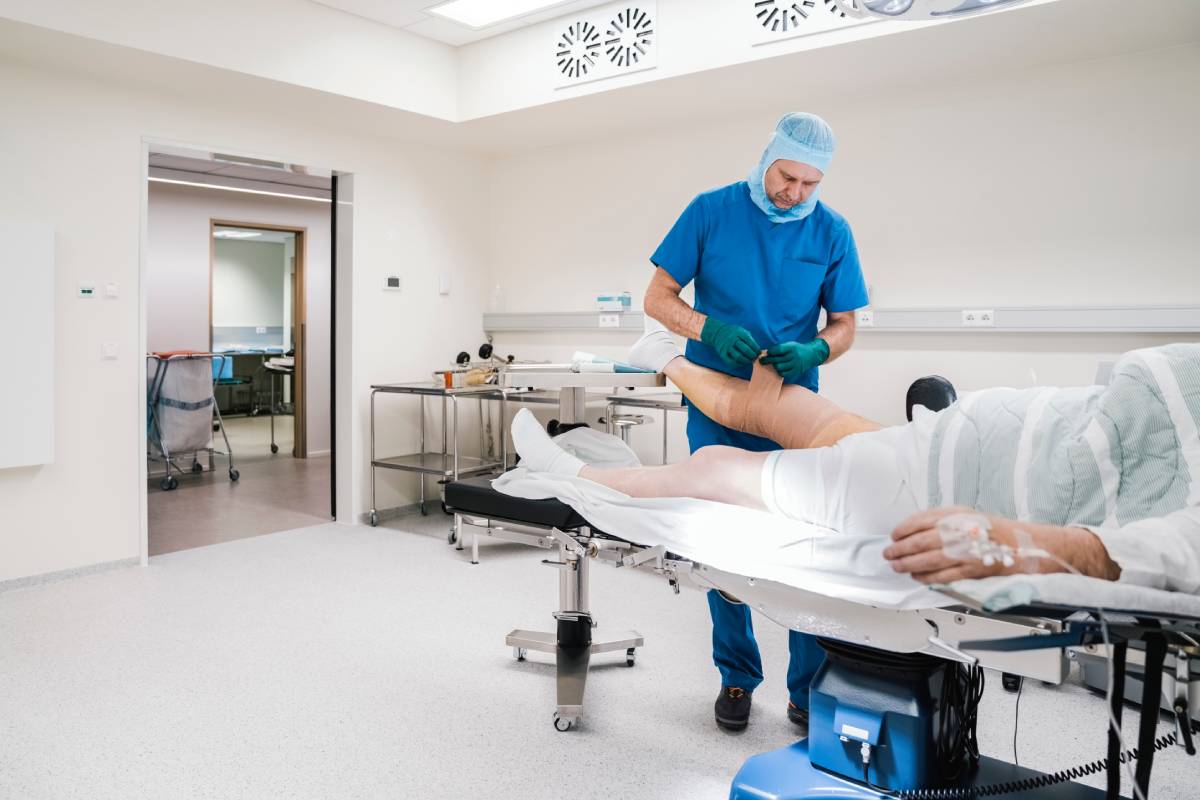
Compartment syndrome is an emergency that can occur during surgery when pressure builds up in an enclosed space of tissue, eventually cutting off blood flow to that area and leading to tissue necrosis. This increased intracompartmental pressure must be reduced quickly through surgical intervention, also known as fasciotomy.
Compartment syndrome most commonly occurs in the anterior compartment of the leg and the limbs in general, but it can also occur in other parts of the body, such as the abdomen. It most often arises after trauma and resulting bone fractures but may also be caused by soft tissue injury, burns, crush injury, overdoses, infection, bleeding disorders, and more. Compartment syndrome can also occur during surgery due to a variety of etiologies (Torlincasi et al., 2023).
Some procedure-related factors that can increase risk of compartment syndrome include duration of surgery, type of surgery, type of anesthesia, and patient positioning. For example, prolonged surgeries can lead to increased external pressure and immobility for patients (Halvachizadeh et al., 2019). Some anesthetic agents can cause hypotension and decreased perfusion pressures. Long-acting regional anesthesia may mask the signs and symptoms of compartment syndrome (Garner et al., 2014). Surgical techniques that require use of tourniquets or increased fluid administration may also increase compartment syndrome risk (Halvachizdeh et al., 2019). Excessive fluid administration can lead to tissue edema and increased intracompartmental pressures.
There are patient risk factors that can also increase the likelihood of compartment syndrome during surgery. For example, patients with conditions such as coagulopathies, diabetes, or peripheral vascular disease may have impaired microcirculation (Papachristos & Giannoudis, 2019). The entire surgical team must pay careful attention to any patient specific conditions that can make them more prone to developing compartment syndrome.
Early diagnosis and treatment of compartment syndrome can prevent irreversible damage to the patient. Preoperative assessment should identify patients at higher risk of compartment syndrome and facilitate planning to mitigate these risk factors. Intraoperative measures include careful patient positioning to avoid prolonged pressure on extremities and limited use of tourniquets (Halvachizdeh et al., 2017). The surgical team should also avoid excessive fluid administration and use careful dissection techniques to minimize tissue trauma. Postoperative monitoring is essential to regularly assess the limb compartments. Some symptoms include severe pain, skin changes, decreased pulses, decreased two-point discrimination, and affected motor function. Measuring intracompartmental pressures of the affected body part can also help diagnose compartment syndrome, and an intracompartmental pressure greater than 30 mmHg will require prompt intervention (Torlincask et al., 2023).
Ultimately, compartment syndrome is a very serious condition that requires high levels of suspicion in patients and procedures with increased risk factors, early detection in the perioperative setting, and rapid treatment. While compartment syndrome is primarily associated with trauma and certain types of injuries, it is important to recognize that it can occur in the surgical environment as well. Ongoing education is essential to ensuring optimal patient safety and health outcomes.
References
Garner MR, Taylor SA, Gausden E, Lyden JP. Compartment syndrome: diagnosis, management, and unique concerns in the twenty-first century. HSS J. 2014;10(2):143-152. doi:10.1007/s11420-014-9386-8
Halvachizadeh S, Jensen KO, Pape HC. Compartment Syndrome Due to Patient Positioning. 2019 Sep 3. In: Mauffrey C, Hak DJ, Martin III MP, editors. Compartment Syndrome: A Guide to Diagnosis and Management [Internet]. Cham (CH): Springer; 2019. Chapter 12. Available from: https://www.ncbi.nlm.nih.gov/books/NBK553906/ doi: 10.1007/978-3-030-22331-1_12
Papachristos IV, Giannoudis PV. Unusual Presentation of Compartment Syndrome. 2019 Sep 3. In: Mauffrey C, Hak DJ, Martin III MP, editors. Compartment Syndrome: A Guide to Diagnosis and Management [Internet]. Cham (CH): Springer; 2019. Chapter 15. Available from: https://www.ncbi.nlm.nih.gov/books/NBK553896/ doi: 10.1007/978-3-030-22331-1_15
Torlincasi AM, Lopez RA, Waseem M. Acute Compartment Syndrome. [Updated 2023 Jan 16]. In: StatPearls [Internet]. Treasure Island (FL): StatPearls Publishing; 2024 Jan-. Available from: https://www.ncbi.nlm.nih.gov/books/NBK448124/

